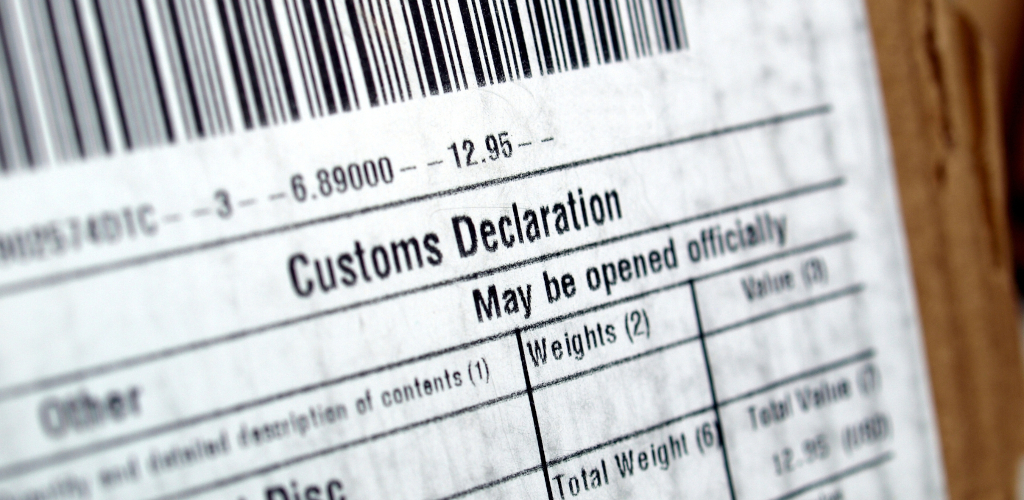Benefits and Business Use Cases for Breakbulk Movers

By John Bensalhia
From Issue 3, 2024 of Breakbulk Magazine
(7-min read)
Technology marches on, with the latest in digitalization techniques and services proving to be a boon for logistics professionals.
Deployed effectively, digitalization is reliable, efficient and results in fewer errors, meaning that teams can concentrate on customer satisfaction. Investment, development and deployment of digitalization for supply chain and logistics activities has developed significantly over the last five years.
From a recent study carried out by the Council of Supply Chain Management Professionals, over 90 percent of companies involved in logistics and supply are investing in new digitalization tools. Benefit-wise, it’s a case of both less and more.
Arto Viitanen, VP of product at Seaber, a Finnish maritime software company, says that on the one hand, it means less manual data entry. “Often cargoes are manually punched in several times into spreadsheets, ERPs and VMSs.” This results in less human errors during data entry and voyage operations.
The other side of digitalization is that it offers more efficient scheduling, as “scheduling tools can be leveraged when data is accessible digitally”. Viitanen says that speed is a key factor, with “much improved quality and quicker turnaround times in internal and external communication”, plus “sped up stowage planning processes as cargo intake can be better estimated by chartering”.
Furthermore, as Christophe Moser, general manager at Globis Software explains, a single data model enables ‘one truth’ throughout the organization. “No time is lost in correcting data and investigating discrepancies.”
Another benefit is the creation of end-to-end transparency on two counts: operational (“Providing operational teams and customers with near real-time information about their shipments,” says Moser) and financial (“Providing the finance team with insight into financial business drivers such as volume and profitability”).
Scalability is another advantage. “While manual processes typically face capacity challenges as the company grows, digitized processes can support operational upscaling, provided the required technical requirements are in place.” Moser adds that digitalization increases “process mastery,” which in turn enables the organization to adapt its processes to changing market conditions.
“AI is quickly developing as the driving force behind supply chain optimizations. But AI is only as good as the data you feed it with. Organizations that digitize with data and process quality in mind, will be able to leverage AI to ‘outsmart’ the competition.”
Complete Overview
 Tim Killen, head of growth for the project sector at Fracht Group, says that integrated digitalization tools to manage complex supply chains for CAPEX and OPEX activities are gaining traction in the logistics and project cargo landscape.
Tim Killen, head of growth for the project sector at Fracht Group, says that integrated digitalization tools to manage complex supply chains for CAPEX and OPEX activities are gaining traction in the logistics and project cargo landscape.
“Large-scale CAPEX projects across all major industry verticals have complex and dynamic supply chain needs, so it is important that all key stakeholders in a CAPEX project provide the necessary good quality data to be able to have visibility and predictability across all aspects of a project’s supply chain: from procurement, manufacturing, expediting, transport in all modes, last mile delivery and warehousing/ storage of cargo prior to transferring to the site construction teams.”
A complete overview of all data and documents related to a project and the equipment to be delivered is essential for successful supply chain management and end-to-end project delivery.
But in the CAPEX project space, there are challenges in successfully digitizing the supply chain for each specific project.
“Many projects have bespoke designs, non-standard equipment requirements, along with a short execution duration whilst the project is constructed. This (coupled with a specialist and evolving supply chain, multiple interfaces and stakeholders with differing maturity of IT infrastructure and systems) can pose a challenge,” says Killen.
Although the nature of these issues vary according to each individual project’s duration and stakeholder maturity, timescales, technical challenges and costs associated with designing and mapping a bespoke digitalization project tool can sometimes prohibit deployment on a project.
Killen said: “The dynamic nature of projects, the relatively short execution durations and complex supply chain systems and stakeholders, all need to be assessed well in advance to identify if the investment to be made to implement can have a significant and tangible value add versus more traditional methods.
“As the digitalization tools available and end-to-end data integration improves, we will continue to see the successful development and deployment of these systems. Most notably, this is currently successful in the wind industry, where cargo commodities are standardized and replication is easier to achieve across all aspects of the supply chain from inbound materials to outbound delivery and installation.”
Emerging Technology
Increasing supply chain efficiency is a key target at Docklab, which develops digital solutions using emerging technology like blockchain, AI and connected IT devices. “By making supply chains more efficient, this helps speed up the energy transition,” explains Aljosja Beije, CTO and co-founder.
“We come up with either ideas that we have internally or ones with external partners. We turn those ideas into digital solutions and evaluate whether there is a market demand for these. We also check whether these are feasible or not and then we spin them out into separate ventures.”
 Docklab has various relevant solutions for project cargo. “We have a solution that allows for digital transfer of ownership of the Bill of Lading and other trade documents,” says Beije. “It is based on the TradeTrust software toolkit developed by an active open-source community of which we are a partner and championed by IMDA, the Infocomm Media Development Authority in Singapore.
Docklab has various relevant solutions for project cargo. “We have a solution that allows for digital transfer of ownership of the Bill of Lading and other trade documents,” says Beije. “It is based on the TradeTrust software toolkit developed by an active open-source community of which we are a partner and championed by IMDA, the Infocomm Media Development Authority in Singapore.
“Anybody can implement these software building blocks into their application. We also build an application around it that basically does the whole process. It’s relevant to both project and bulk cargo. You can do this digitally, which means much faster transfer of documentation.
“Before this, the normal way meant printing it off, putting it in a pouch and asking a courier to deliver it somewhere. Given the fact that project cargo can sometimes go to very remote locations, these kinds of digital solutions really help to speed up the whole process of documentation and maritime transport of project cargo.”
A recently-launched Docklab solution is ETS Navigator, which handles all the administration for offsetting carbon emissions of maritime transport. “It gives you extra testaments of CO2 emissions per voyage and it calculates the level of CO2 emissions that need to comply with the ETS regulations. It’s relevant for project cargo that is both coming in and out of Europe.”
Plenty of Paperwork
There is still much paperwork in project cargo, meaning professionals still spend valuable time keying in data. Docklab has developed (using advanced AI models) a solution that can efficiently and flexibly read PDF documents and transform them into machine-readable code.
“It’s something that we use internally to support some of our ventures,” says Beije. For example, we use it for bunker notes – most of them are still paper documents. When booking in, we ask for scans instead of notes.”
Another notable player in the digitalization field is Seaber – a cloud-based real-time planning, optimization and communication solution for bulk cargo and vessels. This offers a multi-scenario schedule planning with easy drag-and-drop modification to the scenarios and a built-in TCE calculator that’s always up-to-date for the whole fleet, always reacting to any modifications.
“This can yield significant ballast distance reductions and improvement to fleet profitability,” says Viitanen. “As well as these, Seaber includes data automation for keeping the schedule up to date with operational updates such as ETA/ETB/ETD; support for maintenance of many types of vessel/ cargo/port restrictions and related warnings; analysis of the competitive situation for spot market cargoes; and low friction communication platform between chartering, operations and COA scheduling.”
Going with the Flow
Meanwhile, Globis’ enterprise cloud-based software platform supports end-to-end logistical flows for breakbulk and project cargo. “The platform supports the key functions in the supply chain,” explains Moser. “Forwarding management, warehouse and terminal management, as well as transport management.
“It also covers the contracting and billing of logistical services. Business portals and advanced integration capabilities ensure an efficient collaboration with business partners and integration with your other applications.”
Globis maps the business requirements of the customer with industry best practices and the software’s capabilities. “The Globis software is then configured according to the documented processes and key users are trained to get the most out of the platform. These implementations are performed by Globis consultants in partnership with integration partners.”
Globis is also capable of serving large and complex organizations with high demands on security, stability and scalability. “Large organizations can start with limited functionality in one subsidiary, but can expand to more subsidiaries and increase its functional footprint at the same time.”
 Globis Founder & CEO Karel Van den Berghe says that the ‘Digital Twins’ of project cargo will enable companies to better simulate how the cargo needs to be handled, stored, and transported.
Globis Founder & CEO Karel Van den Berghe says that the ‘Digital Twins’ of project cargo will enable companies to better simulate how the cargo needs to be handled, stored, and transported.
One trend quickly coming into effect is the end-to-end track & trace of project cargo. “This is quickly becoming the norm,” explains Van den Berghe. “Through the advent of cheap and reliable hardware, in combination with powerful software to offer all stakeholders full transparency. ‘Data Spaces’ will enable logistics companies to collaborate more efficiently on large projects by offering all stakeholders secure access to real-time data, e.g. cargo details, prices, capacities, events and status updates.
“‘Federated Machine Learning’ is able to train AI-models based on the distributed data of different companies, without the need for these companies to share sensitive, internal information with other companies.”
Liberating Supply Chains
With digitalization continuing to thrive and grow in the bulk and project cargo sector, Docklab’s Beije considers what the future is likely to hold. “What we’ll see in the future is a greater move to the digital transfer of trade documents. In the maritime world, a lot of contracts are under British law, about 80 to 90 percent. That has been an important step in liberating maritime supply chains and transports from the shackles of having to use paper.
“The only reason why you had to do the Bill of Lading on paper was because it wasn’t allowed to transfer title of cargo using the Bill unless there was a wet signature on it. The Bill of Lading is the most important maritime document and because it was on paper, everybody thought ‘forget about digitization because I still have to deal with paper anyway’. With that being removed, we expect digitalization to really take off in the maritime sector.”
Beije raises the potential for AI which he says could be very interesting for bulk and project cargo, with opportunities for tasks such as processing of documents. “But there are also other important applications of AI that can be very useful such as cargo inspection or conveying the right instructions to cargo handlers,” he says.
“For example, if there are staff who don’t speak English, that can be challenging with very complex instructions. If you can use AI to relay visual instructions, this can help and also prevent potential cargo damage.
“In general, I think tech will help make transport more efficient, reduce emissions and costs.”
Fracht Group and Seaber are regular exhibitors at Breakbulk Europe.
